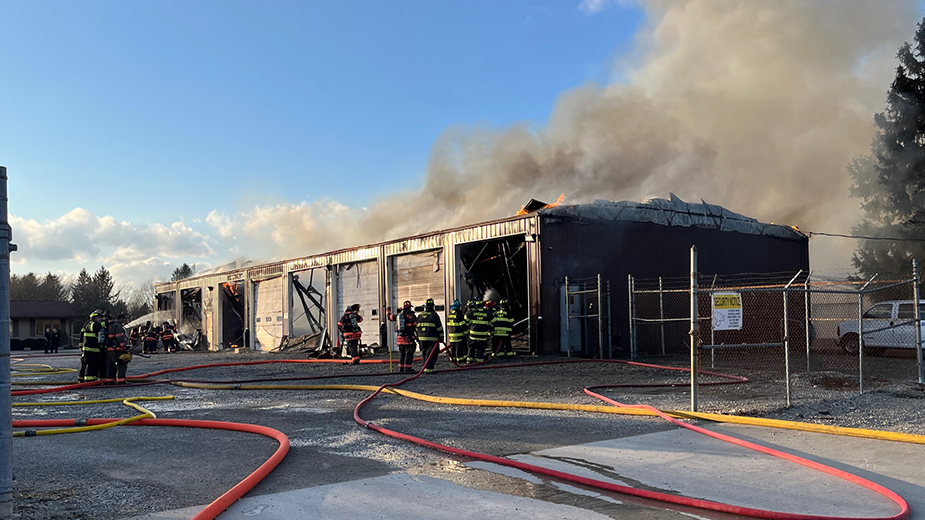Camaraderie Is 5th Ingredient in Craft Beers
YOUNGSTOWN, Ohio — In 2008, the beer industry faced a crisis. The supply of hops, one of the four mainstay ingredients in brewing beer, fell far short of demand as the price rose to $26 a pound from $3.
The crisis, years in the making, had resulted from farmers growing other crops that paid them more and several consecutive summers of bad weather for growing hops.
What reserves the breweries had stored were quickly exhausted as brewers chose to tap into those stores instead of paying the higher prices. Eventually, however, the reserves ran out and the many farmers who had planted other crops had none to sell. Many brewing companies, mostly the smaller ones, had nowhere to turn.
It was then that Samuel Adams beer, one of the most recognized names in craft beer, announced that it would sell 10 tons of its remaining hops to craft brewers at cost. Sam Adams chose 108 of these competitors, saving them from going under or changing their recipes.
While such acts of largesse aren’t common, those in the craft beer industry note the camaraderie among brewers.
“A lot of these breweries are very small and they’re trying to service a neighborhood. We’ll help each other out with, say, a bag of malt or advice,” says Justin Vale, manager of Church Brew Works in Pittsburgh. “We meet locally and have some good back-and-forth. It’s certainly not competitive.”
At Brick & Barrel Brewing in Cleveland, manager Darrell Fickols notes that the dozen breweries inside city limits, have helped his fledgling company, which opened in mid-December.
“It’s a huge help to have places like Portside Distillery, Platform Beer Co., even Great Lakes. We all support each other in as many ways as we can,” he says. “Those guys come visit us. We go see them for events like tastings and helping each other out.”
Several use social media as a forum as well. The Ohio Craft Brewers Association, which represents more than 100 brewers across the state, has a private Facebook page open to all its members.
“If someone has equipment they want to sell, or an excess of hops, or is looking for hops, they can post something,” says Mary MacDonald, executive director of the association.
MacDonald also notes that several national groups run private pages that serve a similar purpose.
Part of what drives collaboration in craft brewing is a sense of community, many are quick to point out.
Church Brew Works’ Vale looks back to the time before Prohibition, when breweries served just one city or, in larger cities, a neighborhood. But by the time the 18th Amendment was repealed, many of the small breweries had closed, leaving the giants of the industry to fill the vacuum. They all but held a monopoly into the 1980s.
“It’s a movement back to how beer used to be. Germany, to an extent, still has the model where you have a regional brewery that serves just a small area,” he says.
“People want good beer. And many have their neighborhood brewery that they come to know. And as long as the beer is good, that’s positive for everybody.”
Even at national conventions, such as the Craft Brewers Conference & BrewExpo America last month in Portland, Ore., brewers interact with companies from the opposite side of the country much as they would with a brewer a few blocks away.
“There are new strains of hops that are bred every year to make new flavors,” MacDonald explains. “That’s a big thing people look for at the craft brewers conferences. They want to see and smell what new hops there are. They want to talk to each other and see what they can do with these new strains.”
Caroline Macdonnell, public relations coordinator for Great Lakes Brewing Co. in Cleveland, also notes the national conventions give the brewery a chance to see what others are trying in areas the company may not have much of a presence.
“Beer festivals and events are a great chance to connect with breweries outside the Great Lakes region. Everyone is willing to share knowledge and techniques that push the industry forward,” she says. “Especially when it’s done over a pint or two.”
And that collaboration, from a local to national scale, often makes breweries more visible within their communities.
In Columbus, an event, May 1 to 9, will bring 17 brewing companies together as part of Columbus Craft Beer Week.
“Collaboration is a big thing for all of us. Seventeen breweries in the city got together and drew names out of a hat to make teams that will, every day of the week, make different collaboration beers,” the Craft Brewers’ MacDonald says.
“People appreciate it and support it. When you support a local craft brewery, most of that money stays in your community,” she says. “It pays the bartenders at the tap house. It pays the brewers or people working in the brewery. That’s important to a lot of people these days.”
Editor’s Note: The May edition of The Business Journal focused on the growth of the craft beer industry here and nationwide. Here are more stories in our Craft Beer series:
Craft Breweries to Open in Austintown, Downtown
Craft Beers, and Their Crazy Names, Go Mainstream
So Many Beers to Sample, So Little Time
Copyright 2024 The Business Journal, Youngstown, Ohio.



